Hi, it’s Lindsay and Barbara! We have both worked as dog walkers and pet sitters for several years and know how difficult the COVID-19 situation is for everyone, including those in the pet service industry.
So, we decided to write this article with ideas on what dog walkers can do during a recession to try to maintain or find new clients. These ideas also apply to pet sitters, dog trainers, groomers, breeders and other business owners. We live in the U.S., so this article is written with that in mind.
We certainly don’t have all the answers, so please add your own ideas or support for others in the comments. Or just let us know how you are doing. – Barbara & Lindsay

What Dog Walkers Can Do During a Recession
We have experience as dog walkers and pet sitters but we feel these ideas will also be helpful for:
- pet groomers
- dog trainers
- breeders
Here are our ideas on what small pet businesses can do during the COVID-19 pandemic or during a recession in general.
1. Dog walkers should apply for the Paycheck Protection Program
Paycheck Protection Program – for small businesses, including sole proprietorships
During the current COVID-19 Pandemic, the U.S. Small Business Administration is offering forgivable loans to small businesses, including sole proprietors, independent contractors and people who are self-employed.
The Paycheck Protection Program is a loan designed to help small businesses keep their workers on the payroll.
From the SBA’s website:
“SBA will forgive loans if all employees are kept on the payroll for eight weeks and the money is used for payroll, rent, mortgage interest, or utilities.
“You can apply through any existing SBA 7(a) lender or through any federally insured depository institution, federally insured credit union, and Farm Credit System institution that is participating.”
We recommend you apply immediately if you haven’t already. If you have questions, ask your accountant and/or banker.
2. Offer gift cards and pre-pay options
If you don’t already offer gift cards or gift certificates (physical or digital), now is the time to do so! These don’t have to be physical gift cards, you can simply offer people the option to pre-pay for future services through your website or PayPal.
For example, Lindsay emailed the dog daycare she normally uses for Remy (they’re temporarily closed due to COVID) and asked if she could pre-pay for 10 nights of boarding.
This local business is important to her because they are patient with her maniac dog and are very willing to feed him his raw diet.
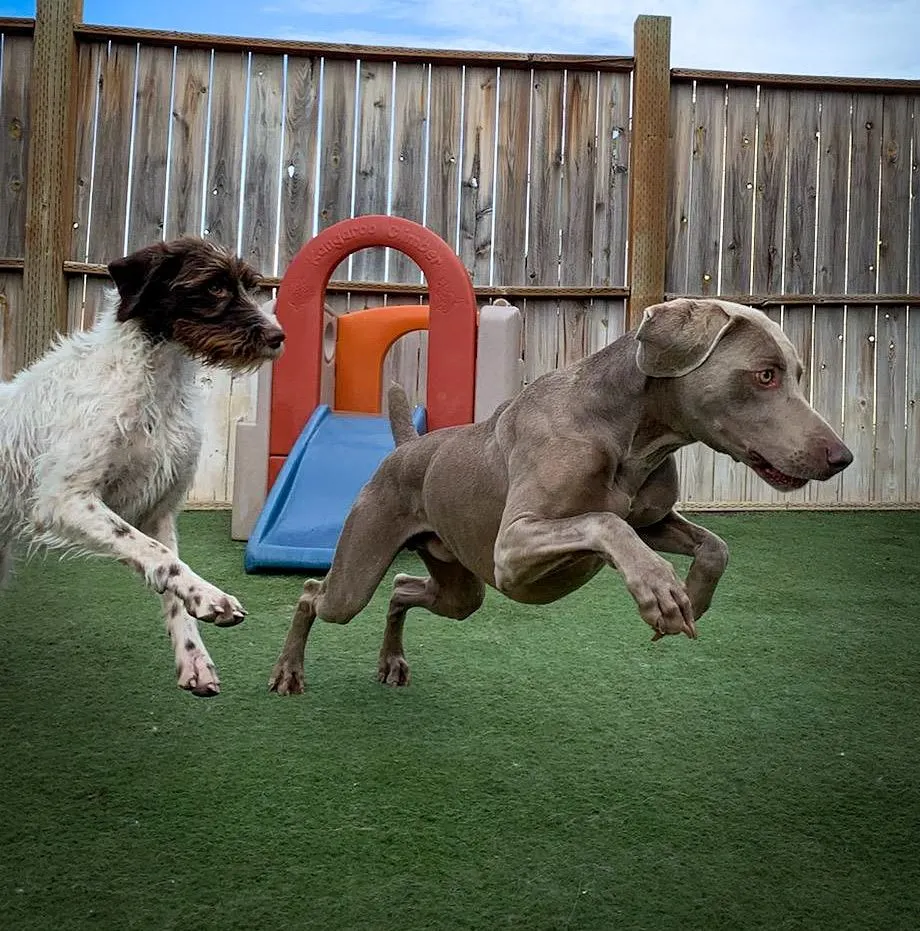
Your clients may want to support you in this way as well, but sometimes they need to be aware of the option. Don’t be afraid to put it out there for them!
We believe an email list is so important for dog breeders, trainers and groomers too and we’re surprised how many don’t have an email list.
Just having an email list can really put your business ahead of others! And it’s so easy to do. Don’t depend on Facebook and Instagram to get your messages across. Use email to directly connect with your customers.
We use Mailchimp and it’s free for up to 2,000 contacts and simple to use. At the very least, send a personal email to every single client you have ever had since the existence of your business. (Use canned responses in gmail to save some time.)
Keep your email brief and just tell the client hi, ask if they are doing OK and let them know you appreciate them and you’ll be here when they need you. Then offer them the chance to pre-pay for future services or purchase gift cards.
We recommend you send out an email to all your clients every three weeks or so. This is your chance to keep your business on their minds and to offer them the opportunity to pre-pay or purchase gift cards.
Don’t be afraid that you’re annoying your clients if you’re only sending them an email every two to four weeks.
Ideas of what to put in your newsletter
- Options for buying gift cards or gift certificates
- Pre-pay options
- Discounts
- Dog training ideas
- Links to your blog articles or videos
- Links to your books, ebooks, any other products
- Perhaps an option for tips or donations if you feel it’s appropriate
- Links to your social media accounts
- Encourage clients to leave reviews
- Ask them to recommend you to their friends
- Give clients the opportunity to ask questions
You can also offer your clients some valuable training articles you’ve written or link to helpful articles from other sites like That Mutt or K9s Over Coffee!
This is Barbara’s recent email template for her dog walking and pet sitting clients:
Subject: Covid-19 Update
Hi {CLIENT_FORENAME},
I hope that you and your fur babies are doing well during these extremely challenging times!
I wanted to check in with you and make you aware of the impact Covid-19 has had on my business. Some of my clients have asked me whether or not I can still come walk or entertain their pup(s) in their yard or neighborhood, so I’d like to address this topic. I currently don’t offer any pet sitting visits as there’s simply no demand for it due to our travel ban.
***Dog Walking***
I’m still offering dog walking services on a Monday – Friday basis for clients who are interested. I’m able to keep the 6 ft social distance from clients who are home and limit my time spent inside client’s homes. I carry hand sanitizer on me and frequently use it before, during, and after visits. I currently don’t leave my usual report cards in an effort to minimize touching anything that isn’t necessary.
***Pre-Payment for Future Services***
This option is available for anyone who’s interested. You can do this within your client portal by doing the following: click on “go to portal” -> click on “make a payment” -> enter the $$$ amount you’d like to pre-pay -> click “next” -> click “submit payment”. Your account will then be in credit for the amount you chose, which will be put towards any future services (dog walking, pet sitting, overnight stays, and pet taxi rides).
***Tips for entertaining your active dog***
I’ve dedicated an entire blog post to this topic and am adding the link to it below. Simply copy and paste it into your browser to access the entire blog post. My ideas include playing games, nose work, trick- and obedience training, grooming sessions, exercising indoors, offering interactive puzzles and long-lasting doggie chews:
Please feel free to reach out to me with any questions you might have! Thank you so much for being a valued client.
With best wishes,
{STAFF_FORENAME} {STAFF_SURNAME}
{COMPANY_NAME}
5. Directly ask dog walking clients to recommend you to their friends
The best way to get new clients is through your existing clients!
Word of mouth is so important for dog walkers, pet sitters, breeders and trainers!
Several, or maybe even all, of your dog walking clients will cancel their appointments for now. As hard as this is, it is understandable from their point of view.
One thing we suggest is you politely ask them if they have any friends or co-workers who may be interested in your services. In fact, they may be very excited to recommend you! Your clients could either introduce you to a friend by email or perhaps they would be willing to give you the friend’s contact info.
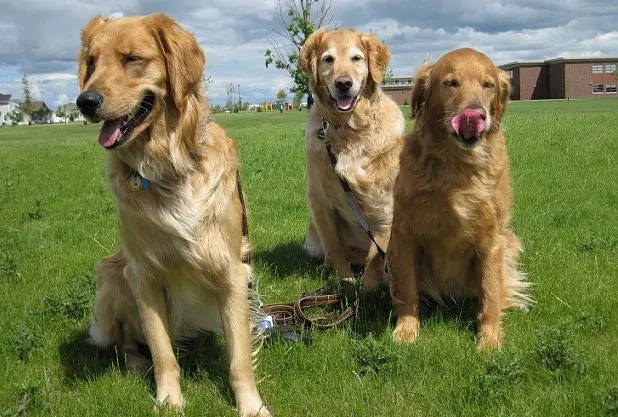
Also see our post: How to get dog walking clients
6. Communication can make (or break) your business
This is so simple. But you’d be surprised how some small businesses are really, really bad at communicating with their customers! They are slow and unclear about answering questions, they don’t check in or confirm appointments and they make the client feel like they are somehow an inconvenience.
Have you ever experienced this in any type of service industry? You’re certainly not going to be loyal to that business or recommend them.
Lindsay started her dog running business Run That Mutt during the 2008 recession. One of the reasons she believes her business did so well during that time was because she communicated so well with her clients and acted professionally.
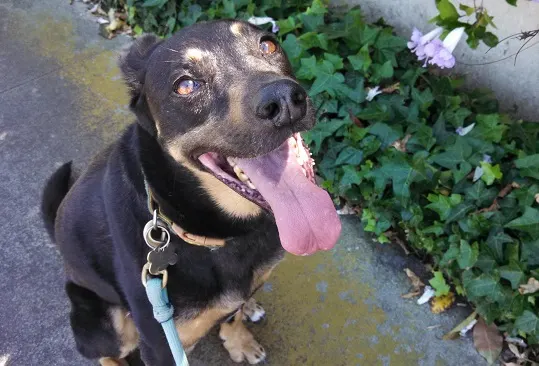
She was very organized with all her paperwork and appointments, called or emailed people back promptly, sent photos of the pets to her clients after each appointment and communicated clearly about any scheduling issues such as holidays or extreme North Dakota weather. Most of all, she was simply very polite and caring.
Make sure to go out of your way to make your clients feel special and appreciated! Answer their questions clearly and quickly. Predict potential issues ahead of time and address them. Leave occasional notes or gift. Say thank you. Don’t leave mud all over their entryway after a dog walk, etc.
7. Offer online dog training
Since in-person gatherings are not recommended or even allowed right now, lots of dog trainers are offering one-on-one or group training sessions through Zoom or Skype. You could offer free sessions or charge a fee.
If you decide to do the latter, you could either charge per training session or offer a longer course with multiple sessions for a slightly discounted price.
There are a few different options for collecting your payment:
- PayPal or other digital payment platforms like Venmo or Zelle.
- Your regular credit card processing system such as Stripe. That’s what Barbara uses for her dog walking and pet sitting business.
- USPS still delivers our mail, so technically you could also accept paper checks, although this option is obviously going to be the slowest way of receiving your payment.
8. Offer new services through your dog walking business
Hopefully we’ll all be out and about back to “normal” sooner rather than later. When the economy is booming and demand is high for dog walking, etc., it’s easy to “pick and choose” your clients and to offer the services you like the most.
When the economy is not doing well, we have to get a little more creative and offer a wider range of services. For dog walkers, that might mean offering:
In-home boarding
That’s when your client’s dogs stay at your home while their owners are out of town. You’ll have to ensure that their dogs get along with your resident pups, so you should schedule doggie meet & greets beforehand, ideally in a neutral location such as on a walk. We also recommend you add the appropriate liability insurance coverage to this service just in case something were to happen to your canine guest while they’re staying at your place.

Overnight sleepovers at the client’s house
Some dogs don’t do well when left home alone, which is why their owners will gladly pay you to spend the night at their place. You can expect to sleep in a guest bedroom, although some clients may also require you to sleep in their bed, along with their dogs.
You’re essentially getting paid to recreate the dog’s routine. Overnight sleepovers usually last 12 hours, somewhere between 7 pm and 7 am.
Nail trims or baths
If you’re good at trimming nails and don’t mind giving baths, this is an easy add on to your existing services. Clients enjoy a one-stop-shop kind of service, especially when it can happen in their own home.
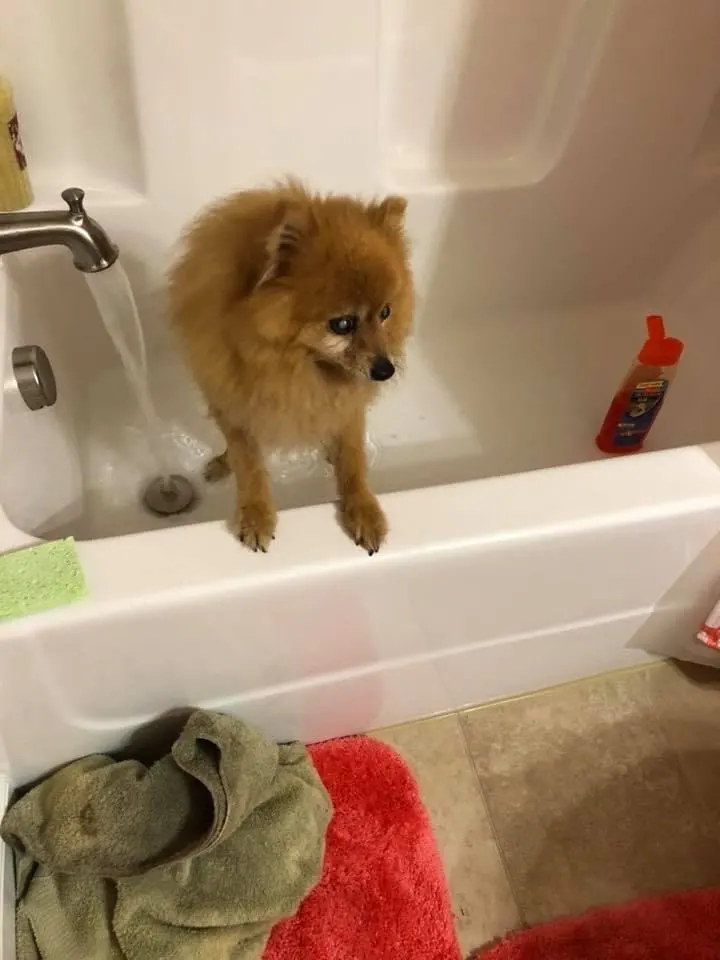
Care for horses, birds and other animals besides dogs and cats
If you expand your pet sitting services to a wider clientele, you’ll obviously attract more business opportunities. However, make sure that you’re truly knowledgeable in providing care for other pets before offering this service.
Offering basic dog training
“Sit,” “down,” “stay,” and “come” are commands that are fairly easy to teach and can even be incorporated into dog walks and/or backyard playtime sessions. All you need is a treat bag and high-value treats!

Taxi service for dogs
You can offer the service to take dogs to the vet, the groomer’s, or their boarding facility.
Barbara offers pet taxi services and has even had the request to simply drive around with someone’s dogs while their home was being shown. For liability reasons, you should always secure your taxi guests either with a crate or a dog safety belt and harness.
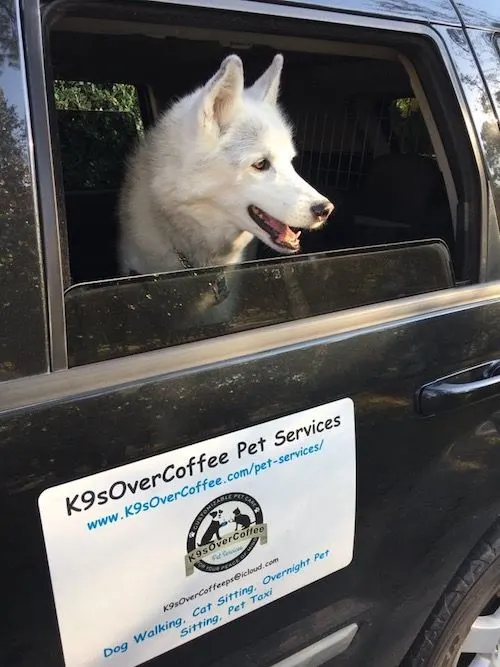
House sitting (no actual pets)
This is an attractive option for people who travel a lot and will be gone for multiple weeks at a time. Some people will have you stay at their home full-time, others simply want you to check in once or twice a day to alternate lights and blinds, get the mail, and water plants.
9. “Passive income” options
We feel these options are a lot of work for very little return (generally). However, if you already have a paying “audience” through your clients or if you’ve already started up a blog or YouTube channel, some of these options might be realistic such as:
- Start a YouTube channel (potential for ad revenue, affiliates, sponsorships, selling products). If you enjoy being on video and are good at video editing, why not start a YouTube channel that features you and your pups? Offer actionable advice in a specific niche such as dog training, raw feeding, or unboxing doggie accessories. Remember, YouTube is a giant (video) search engine!
- Add a blog on your existing website (ad revenue, affiliates, sponsorships). Focus on a topic you’re passionate about and that helps solve people’s problems. Lindsay writes about down-to-earth dog training and raw feeding. Barbara also covers raw feeding along with occasional dog training and doggie lifestyle articles.
- Sign up for affiliate programs. Amazon is probably the easiest way to get started but look into others. Many pet brands are on Share-A-Sale and others have their own affiliate programs.
- Write an ebook or create a course. Lindsay and Barbara have both created ebooks on raw feeding for dogs that are available for under $10.
- Potential sponsorships with brands. If you’ve used and believe in a specific product from a brand AND you have a decently sized audience, see about getting sponsored. Lindsay’s currently being sponsored by raw dog food brand Darwin’s.
- Patreon – a platform that allows fans/followers to contribute to content creators in exchange for “rewards.” Lindsay has a Patreon account where she rewards her fans with monthly dog accessories from the brand Mighty Paw.
10. Network with other dog walkers even during a recession
Dog walkers and other businesses should support each other and send business back and forth when there’s overflow or services one can’t accommodate but the other can.
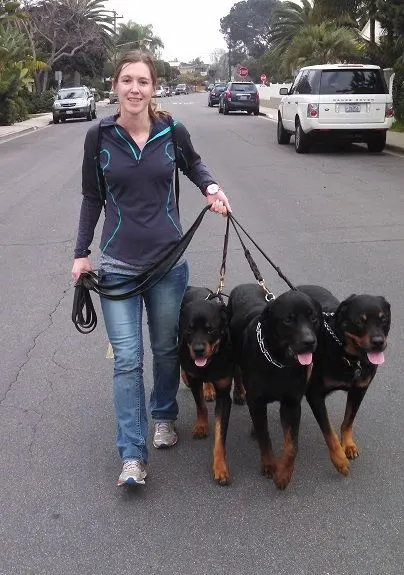
Send a short email to introduce yourself. Here’s the template Lindsay used:
Hi, my name is Lindsay and I’m the owner of Run That Mutt here in town. I offer dog walking and dog running. You have a great website and looks like you have happy clients too! I’d be happy to recommend you when I am unavailable. Just wanted to introduce myself and say hello!
-Lindsay
You could offer to meet the other dog walker or pet sitter for coffee briefly. Lindsay did that a couple of times and found it really beneficial.
You can also network with other types of businesses in the pet services niche such as:
- Dog groomers
- Boarding facilities
- Pet spas
- Veterinarians
- Dog trainers
- Pet retail stores
- Dog breeders
Ask them if it’s ok to leave your physical business cards in their brick-and-mortar stores. Also see if they’d be willing to recommend your services when they’re at capacity or if their clients ask them for a service they don’t offer but you DO.
Real estate offices
Another option is to talk to real estate offices in your geographical area. Swing by with a coffee to introduce yourself and see about their advertising offers. They might be able to include your business cards and/or brochures in their guides for new homeowners.
Online platforms where you can virtually connect with other businesses in your niche are LinkedIn and Alignable.
Also consider joining your local Chamber of Commerce and see about attending their business networking events.
11. Advertise heavily on Facebook to people in your location
Once the stay at home recommendations are over, hopefully soon, this is a good way to reach people in your immediate area.
Until then, make sure to upload pictures to your Facebook business page and encourage your existing clients to leave reviews for the services you’ve provided. Potential new clients really do want to see those reviews!
Also include detailed descriptions of your services along with prices of what you charge.
12. Dog walkers should plan ahead for future recessions: Think about adding an additional stream of income
In recession times like these where non-essential brick-and-mortar stores stay mostly closed, the services industry as a whole is not the most sought after. That’s why it’s generally a good idea to have at least 2 months worth of living expenses saved and ready to tap into should you fall on financial hardship.
It may also literally pay off to have an additional stream of income in a niche that’s more recession-proof such as:
- Accounting.
- Education.
- Utilities.
- Medical.
- Delivery services.
Obviously you’ll have to go through some on-the-job training or school, but it’s worth considering it as you could work part-time in all of these industries.
How you can support dog walkers and other small businesses
If you’re a dog owner who appreciate your dog walker or trainer, here are some ideas on how you can support your favorite them:
- pre-pay for future appointments
- continue paying for service even if you cancel temporarily
- buy gift cards
- leave or send a tip
- text or email to show appreciation
- leave positive reviews
- sign up for their online dog training classes
- buy your dog trainer’s books or ebooks
- share your dog walker or trainer’s blog articles
Lindsay wrote more about what dog owners can do in general in this post: Dogs and COVID-19.
She also wrote about how you can help an animal shelter here.
Now we’d like to hear from you!
How are you doing during this COVID-19 situation? Do you have any ideas on what dog walkers can do during a recession? Let us know, and we’ll add them to the list!
If you have any questions, let us know in the comments!
Barbara Rivers writes regularly for That Mutt. She is certified in raw dog food nutrition from Dogs Naturally Magazine and the author of three ebooks about balanced raw dog food. She is a blogger at K9s Over Coffee.

Patricia G Mcsharry
Friday 17th of April 2020
Great information